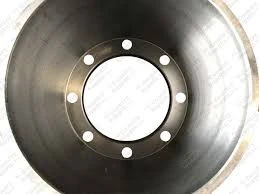
-
 Afrikaans
Afrikaans -
 Albanian
Albanian -
 Amharic
Amharic -
 Arabic
Arabic -
 Armenian
Armenian -
 Azerbaijani
Azerbaijani -
 Basque
Basque -
 Belarusian
Belarusian -
 Bengali
Bengali -
 Bosnian
Bosnian -
 Bulgarian
Bulgarian -
 Catalan
Catalan -
 Cebuano
Cebuano -
 Corsican
Corsican -
 Croatian
Croatian -
 Czech
Czech -
 Danish
Danish -
 Dutch
Dutch -
 English
English -
 Esperanto
Esperanto -
 Estonian
Estonian -
 Finnish
Finnish -
 French
French -
 Frisian
Frisian -
 Galician
Galician -
 Georgian
Georgian -
 German
German -
 Greek
Greek -
 Gujarati
Gujarati -
 Haitian Creole
Haitian Creole -
 hausa
hausa -
 hawaiian
hawaiian -
 Hebrew
Hebrew -
 Hindi
Hindi -
 Miao
Miao -
 Hungarian
Hungarian -
 Icelandic
Icelandic -
 igbo
igbo -
 Indonesian
Indonesian -
 irish
irish -
 Italian
Italian -
 Japanese
Japanese -
 Javanese
Javanese -
 Kannada
Kannada -
 kazakh
kazakh -
 Khmer
Khmer -
 Rwandese
Rwandese -
 Korean
Korean -
 Kurdish
Kurdish -
 Kyrgyz
Kyrgyz -
 Lao
Lao -
 Latin
Latin -
 Latvian
Latvian -
 Lithuanian
Lithuanian -
 Luxembourgish
Luxembourgish -
 Macedonian
Macedonian -
 Malgashi
Malgashi -
 Malay
Malay -
 Malayalam
Malayalam -
 Maltese
Maltese -
 Maori
Maori -
 Marathi
Marathi -
 Mongolian
Mongolian -
 Myanmar
Myanmar -
 Nepali
Nepali -
 Norwegian
Norwegian -
 Norwegian
Norwegian -
 Occitan
Occitan -
 Pashto
Pashto -
 Persian
Persian -
 Polish
Polish -
 Portuguese
Portuguese -
 Punjabi
Punjabi -
 Romanian
Romanian -
 Russian
Russian -
 Samoan
Samoan -
 Scottish Gaelic
Scottish Gaelic -
 Serbian
Serbian -
 Sesotho
Sesotho -
 Shona
Shona -
 Sindhi
Sindhi -
 Sinhala
Sinhala -
 Slovak
Slovak -
 Slovenian
Slovenian -
 Somali
Somali -
 Spanish
Spanish -
 Sundanese
Sundanese -
 Swahili
Swahili -
 Swedish
Swedish -
 Tagalog
Tagalog -
 Tajik
Tajik -
 Tamil
Tamil -
 Tatar
Tatar -
 Telugu
Telugu -
 Thai
Thai -
 Turkish
Turkish -
 Turkmen
Turkmen -
 Ukrainian
Ukrainian -
 Urdu
Urdu -
 Uighur
Uighur -
 Uzbek
Uzbek -
 Vietnamese
Vietnamese -
 Welsh
Welsh -
 Bantu
Bantu -
 Yiddish
Yiddish -
 Yoruba
Yoruba -
 Zulu
Zulu
Revitalize Your Vehicle's Brake Drums for Improved Performance and Safety
Resurfacing Brake Drums Importance and Process
Brake drums are an integral part of a vehicle's braking system, particularly in older models and certain types of vehicles, such as trucks and SUVs. Given that these components play a critical role in the vehicle's safety, maintaining them is essential. One of the common maintenance practices for brake drums is resurfacing, which can extend their lifespan and improve braking performance.
Understanding Brake Drums
Brake drums function by housing the brake shoe, which presses against the drum surface when the brakes are applied, creating the necessary friction to slow down or stop the vehicle. Over time and with constant use, the surface of the brake drums can wear out due to heat and friction, leading to grooves or warping. This deterioration can result in reduced braking efficiency, increased stopping distances, and even safety hazards.
Why Resurface Brake Drums?
Resurfacing brake drums is important for several reasons
1. Improved Performance A smooth surface ensures better contact with the brake shoes, enhancing braking effectiveness. Resurfacing eliminates any grooves and imperfections that may cause the brakes to grab unevenly.
2. Cost-Effective Maintenance Rather than replacing worn brake drums, which can be expensive, resurfacing is often a more economical solution. It allows you to take advantage of the existing drum material while restoring its functionality.
3. Extending Lifespan Regular resurfacing can prolong the life of the brake drums. By maintaining an even surface, the risk of further damage is reduced, potentially avoiding the need for premature drum replacement.
resurface brake drums

The Resurfacing Process
The resurfacing process typically involves several steps
1. Inspection The brake drums are first inspected for cracks, excessive wear, or other damage. If any significant issues are found, replacement may be necessary.
2. Machining If the drums are deemed suitable for resurfacing, they are placed on a lathe machine. This device shaves off a thin layer of material from the drum's inner surface, creating a smooth and even finish.
3. Balancing After machining, the drums are checked for balance. An unbalanced drum can cause vibrations and lead to uneven wear on brake components.
4. Reinstallation Once resurfaced, the brake drums are reinstalled along with new brake shoes, ensuring that they fit snugly and operate at optimal performance levels.
Conclusion
In summary, resurfacing brake drums is a crucial maintenance task that can enhance the safety and performance of your vehicle. By understanding the importance of this process and adhering to regular inspection schedules, vehicle owners can ensure that their braking systems function reliably and efficiently. Whether you are a DIY enthusiast or prefer professional services, paying attention to brake drum maintenance is key to a safe driving experience.
-
Rear Drum Brakes Maintenance TipsNewsAug.04,2025
-
Key Components Affecting Brake Drum FunctionNewsAug.04,2025
-
Important Inspection for Truck Drum BrakeNewsAug.04,2025
-
How to Prepare for Changing Rear Drum BrakesNewsAug.04,2025
-
Essential Tools for Cleaning Drum Brakes ProperlyNewsAug.04,2025
-
Brake Drum Function GuideNewsAug.04,2025
-
Safety Features of Red Brake DrumsNewsAug.01,2025
